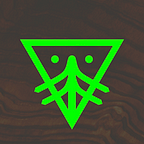Mōdraniht
December: Honouring the divine ancestors
🎼 They’ll Clap When You’re Gone by Chelsea Wolfe
Mōdraniht (Old English: ‘Night of the Mothers’ or ‘Mothers’ Night’) was an ancestor ritual ceremony in honour of female ancestors, goddesses and the Ealdmōdru (Old English: ‘Grandmothers’) held the night before Yule (Old English: ‘Ġēola’), what is now Christmas Eve, by Anglo-Saxon pagans. As described:
Anglo-Saxon social tradition and views of the dead held much commonality with other peoples; they extended the view that their communities encompassed their deceased, and that death was simply an event in a prolonged life cycle and an extension of the physical living community as a whole.
The association of the community with the ancestors, especially those long past, was deemed crucial in transforming potentially harmful ghosts or revenants into beneficent figures who sought to assist and protect their descendants.
A celebration of such figures, of foundational pillars to society, with all their roles and powers, as well as the tutelary representations of the home, family, and geography, would go far in ensuring such beneficence, and helps to forge practical ritualized relationships for those abroad from their traditional regions.
In light of the importance placed on the role of women in its contemporary society, it is clear to see the why of the celebration of these divine mothers and matrons.
Scholars have proposed connections between the Anglo-Saxon Mōdraniht and events attested among other Germanic peoples. Specifically those involving Yule, the Dísir, and the Germanic Matres and Matronae.
Dísir & the dísablót
In Norse mythology, a dís (Old Norse: ‘lady’) is a female ancestral deity, ghost, or spirit associated with Fate who can be either benevolent or antagonistic toward mortals. Dísir may act as protective spirits of Norse clans, and their veneration may derive from the worship of the spirits of the dead. There is considerable evidence that they were worshipped in Scandinavia in pagan times, via a sacrificial festival honouring them, called the dísablót.
The blót (Old Norse: ‘blood sacrifice’) was held during winter nights, or at the vernal equinox, in honour of the female spirits or deities to enhance the coming harvest. The rite was likely performed by women, especially in light of what is generally believed to be their nearly exclusive role as priestesses of pagan Germanic religion.
The number of references to the Disir ranging from the Merseburg Charms to many instances in Germanic mythology indicate that they were considered vital deities to worship and that they were primary focus of prayers (e.g. the charms) for luck against enemies in war.
The dísir play roles in Norse texts that resemble those of Fylgjur, Valkyries, and Norns, so that some have suggested that dísir is a broad term meaning “goddess”, which includes the other beings. They are always referred collectively in surviving references.
Matres and Matronae
The Matres (Latin: ‘Mothers’) and Matronae (Latin: ‘matrons’) were female deities venerated in regions of Northwestern Europe that were occupied by the Roman army, of whom relics are found dating from the first to the fifth century AD. They are depicted on votive offerings and altars that bear images of goddesses, depicted almost entirely in groups of three.
The motif of triple goddesses was widespread in ancient Europe; compare the Fates (including Moirai, Parcae, and Norns), the Erinyes, the Charites, the Morrígan, the Horae, and other such figures, including the Tridevi of Hinduism. Associated imagery with Germanic sources has been thought to be symbolic of an association with the souls of the dead or the underworld, and protection over the family as well as a particular function as midwives.
Part of Heathens seasons: a celebration of indigenous European traditions
All content adapted or transcribed directly from Wikipedia. Sources: Mōdraniht, Dís, Dísablót, Matres and Matronae
